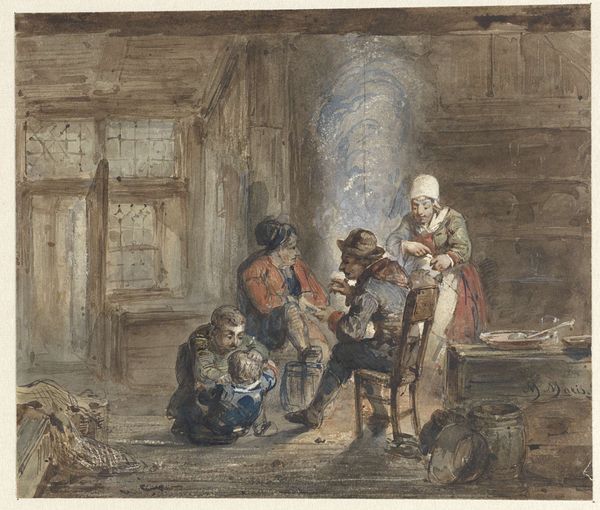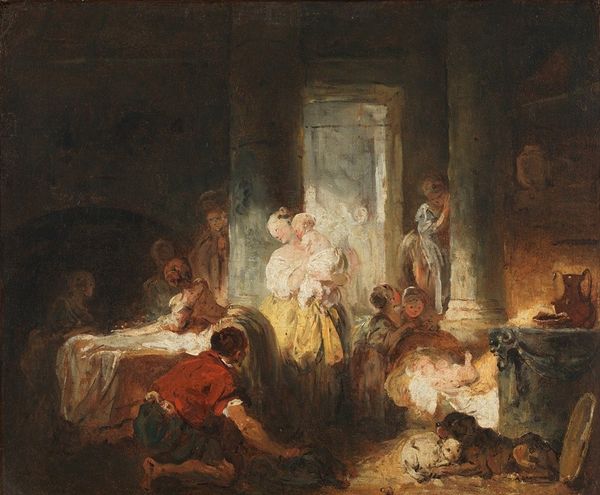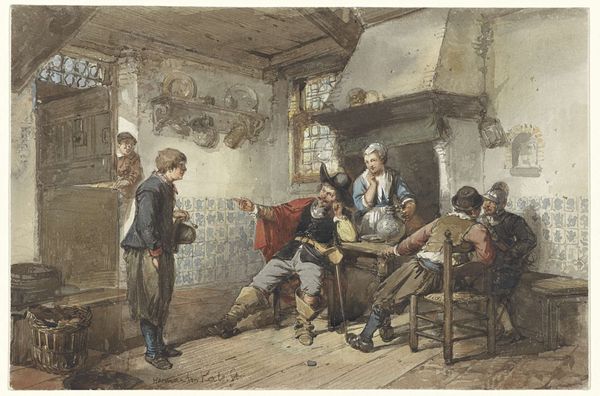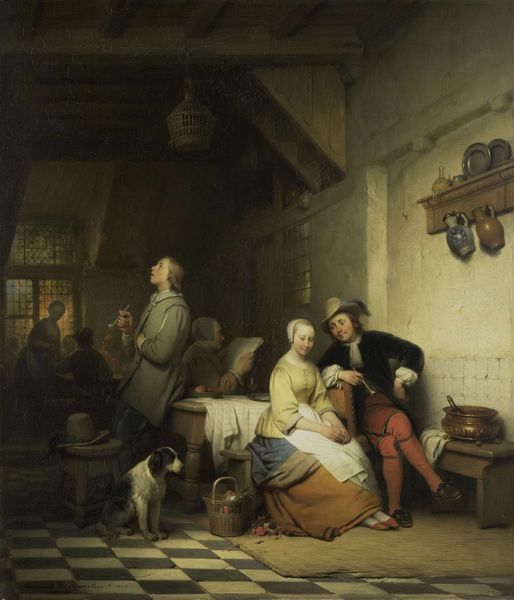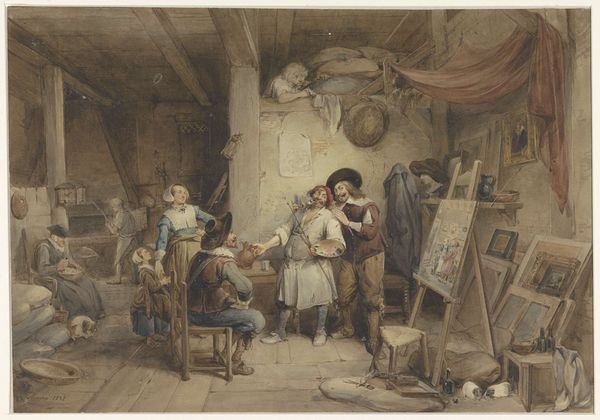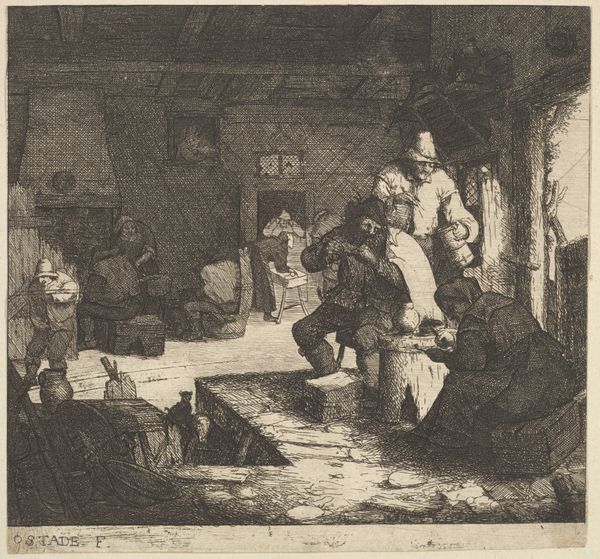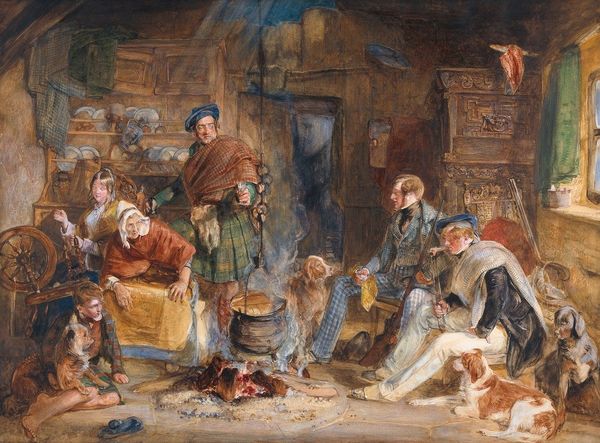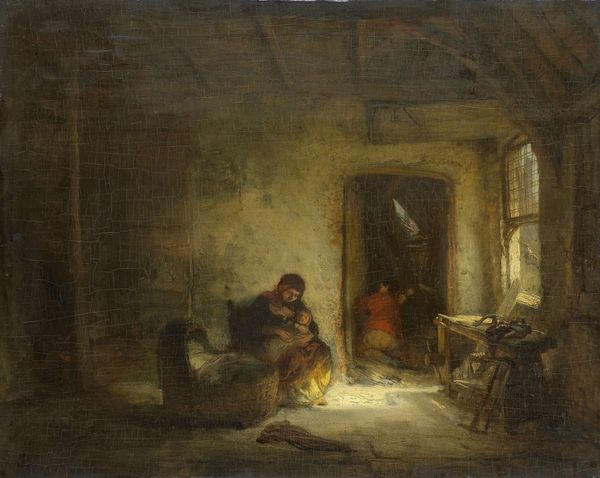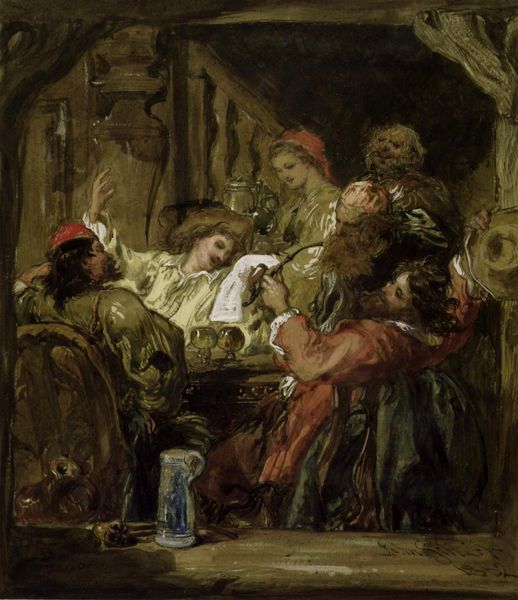
Dimensions: 42.4 x 53 cm
Copyright: Public domain
Editor: This is "Return of the Wounded Soldier" by Domenico Induno, painted in 1854. It’s an oil painting, and I’m immediately struck by the somber mood. There’s such a clear story being told in this scene of a soldier back from war. What do you see in this piece? Curator: The painting, indeed, encapsulates a very poignant narrative. Induno situates the soldier’s return not as a moment of triumph, but one steeped in the harsh realities of war. Consider the sociopolitical context. 1854 was the year the Crimean War began. This context transforms the painting into a powerful statement about the personal costs of conflict, rather than patriotic celebration. Editor: So, it's a commentary on the war itself, not just a portrait of a soldier? Curator: Exactly! The family’s huddled attention conveys anxiety and financial instability, turning the idealized image of the returning hero on its head. Observe the dark tones and the soldier's weary posture; it’s not just about physical wounds, is it? This Romantic Realist style can be a subtle but sharp critique. What do you make of their expressions? Editor: They do look concerned, more burdened than relieved. Maybe I initially romanticized it, seeing only the homecoming, but now I realize it’s about what happens after. Curator: And what that "after" represents. The war doesn't end on the battlefield. It extends into homes, altering family dynamics, and reshaping identities. It is as much about psychological damage as it is physical injury. Induno uses the soldier’s body as a site for exploring broader themes of societal trauma. Editor: This really changes how I see genre painting. I assumed it was just about everyday life, but you're showing me it can be so much more. Curator: It’s about finding the subversive within the ordinary, understanding how art engages with the social and political issues of its time. Never forget the intersectional impact of art, literature, politics and the culture they produce together.
Comments
No comments
Be the first to comment and join the conversation on the ultimate creative platform.
